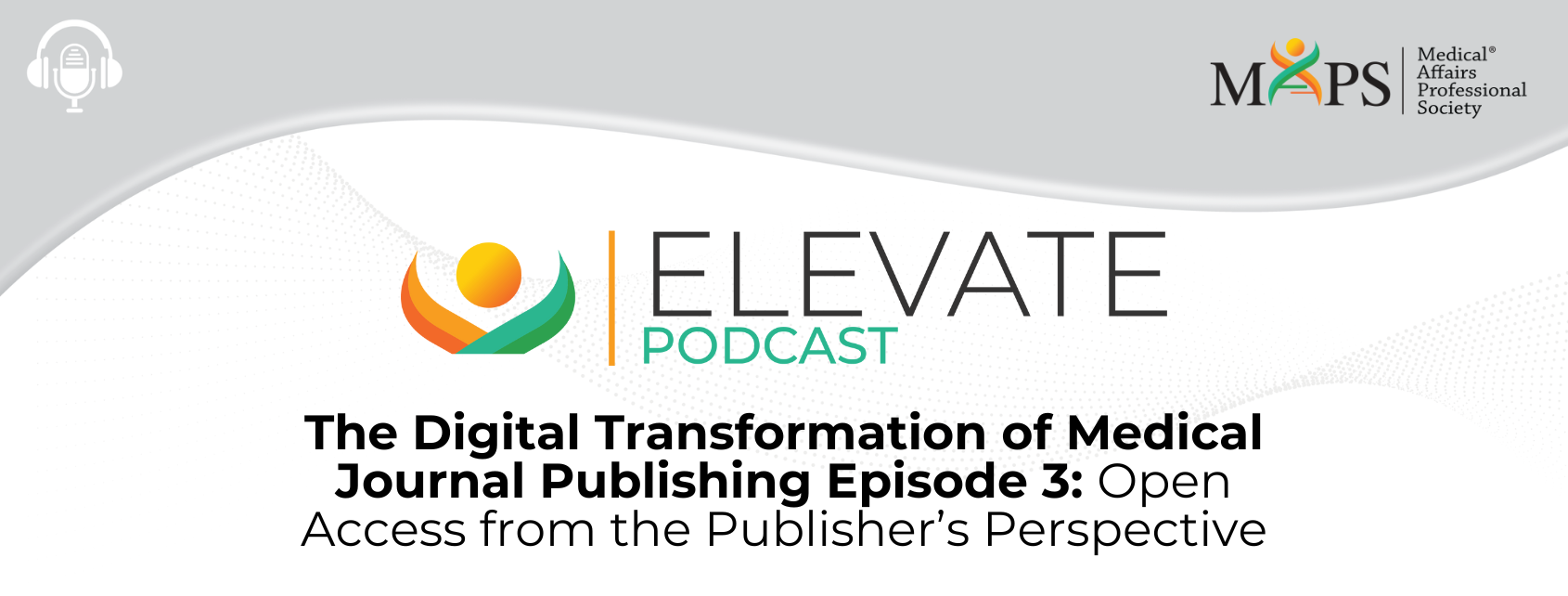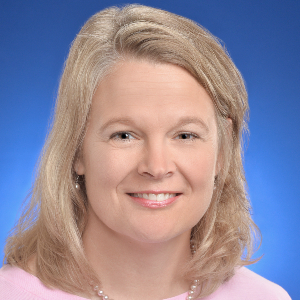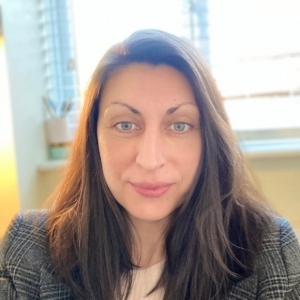The Digital Transformation of Medical Journal Publishing
Episode 3: Open Access from the Publisher’s Perspective
Speaker: Jennifer Riggins
Speaker: Steve Casey
Speaker: Leila Moore
Following is an automated transcription provided by otter.ai. Please excuse inaccuracies.
Jennifer Riggins 00:00
Hi everyone, welcome to the Medical Affairs Professional Society Digital Focus Area Working Groups podcast theory, Digital First Scientific Communication, How Digital is Transforming Medical Communications. In these podcasts we speak with experts in the field of scientific communications, and discuss how the digital transformation of medical publishing is opening opportunities for medical communicators. I’m Jennifer Riggins. I’ll be the moderator for today’s podcast. I currently serve as a member of the Digital Focus Area Working Group and I’ve worked in pharma for about 30 years with a focus on medical information scientific communication, and medical digital, and I currently work as a technology and partnerships strategist for factor my I’m joined by Steve Casey of Omni Healthcare Communication, or Omni HC for short. A leader in digital first medical communication.
Steve Casey 00:55
The views expressed in this recording are those of the individuals and not necessarily reflect on the opinions of MAPS, or the companies in which they are affiliated. This presentation is for informational purposes only and it’s not intended as legal or regulatory advice.
Jennifer Riggins 01:11
We encourage you to learn more about digital optimization of medical communication. There are so many enduring educational materials available through Mac’s including the first season of this podcast, elevate articles on audience amplification and contemporary publication planning, and audience amplification webinar and Annual Meeting workshops that have been recorded and are housed on the MAPS website. Through our podcast series, we hope to help listeners better understand how and why medical communication is changing, and where it’s going in the future. The benefits of digital first development of medical communications, new digital channels and communications that can enhance and improve publication access and resonance. And this our third episode of the season will be discussing open access and medical publishing from the medical publishers perspective with Leila Moore. Leila is the Director for Open Access Policy for the multinational publisher, Wiley. Welcome, Leila. Thanks so much for joining us today. How about if we start by you giving us a brief background of your career and the responsibilities of being the director for open access policy at Wiley?
Leila Moore 02:24
Yes, absolutely happy to and many thanks for inviting me along to take part in this podcast today. So I’ve been working in academic publishing for over 15 years now. And I’ve worked for a number of publishers, including university presses and larger publishing companies. I joined Wiley in 2021 is director of open access policy after spending around 10 years working for Taylor and Francis. And this is where I first became really interested in open access publishing, I think part of the Open Access transformation since the early days, and I really enjoyed playing a role in transition to open access. My role at wide is really interesting and really varied. A major part of this role involves staying up to date with the ever changing open access policies and mandates that we’re seeing coming from research funders, universities, and governments. And publishers are working really hard to continue to enable as many authors as possible to publish in their journal of choice, irrespective of funder or institutional mandate. And a really key part of my role is to make strategic recommendations for the business based on these external developments.
Jennifer Riggins 03:32
Thank you for that, I think you have a wealth of experience that’s going to be really valuable to our listeners here. This is the second podcast this season that we’ve had on open access. We did an earlier episode with Katherine Goby to help launch Open Access week, that episode focused on open access and how important it is from a biopharma perspective. In this episode, we want to concentrate a little bit more on open access from a publisher point of view. So maybe we should start off by doing a bit of a level set. So Leila, could you explain for the listener, what open access is, from your perspective as an open access publisher and how it works within Wiley?
Leila Moore 04:15
Yeah, absolutely. So I would say open access from the publishers perspective is not really that different from open access from a researcher or policymaker perspective. I don’t think there’s one rule for us than one rule for others. But simply open access is a mechanism to make published research accessible to anyone with an Internet connection. It does get a little more complicated, and there are lots of things that that vary within the Open Access world. But some of the basics there are a number of different funding models when it comes to open access and authors can choose different license types that offer different levels of reuse rights, from CCB y, which is a license that allows anyone to reuse content however, they will without having to request permission, as long as they reference the original author to licenses such as CCB, y, n, c and d. And the NC stands for non commercial, the N D stands for no derivatives, which makes basically means it’s a stricter license that allows reuse, but only if it’s not for commercial purposes, and if the original work is not altered in any way, and there are a number of different licenses I won’t go into today. But it does mean that there are options for different circumstances, which I think is a really good thing. But why do we charge article publication charges, which are often called APCs. In order to publish open access, we have over 450, fully open access journals and over 1400 hybrid journals. Hybrid journals are subscription journals that also have an open access publishing option. As these journals publish more and more open access content, we assess the viability of what we call flipping them to fully open access, which means moving away from the subscription part of the journal and becoming fully open access. And in 2022, we flipped 40 journals from the hybrid model to fully open access. And one important mechanism from our perspective that’s had a huge impact on the transition to open access publishing, is the transformational agreement, which is often referred to as a TA, while he is leading the way when it comes to transformational agreements. And what these agreements do is allow authors to publish open access, but for the APC to be covered by their institution. Often these agreements are agreed with consortia or at a country wide level. And these agreements are really helping to drive the transition to open access and helping institutions transition some of their subscription spending to cover publishing costs instead of reading costs. So that’s been a really useful tool in sort of trying to drive this open access movement.
Steve Casey 06:53
As far as I’m I look, it’s good to talk to you. I’ve been looking forward to this episode for some time. In our earlier episode with Katherine SCOBY, we discussed how we peel back the onion of open access. It’s really something that is directly related to the digital transformation of the publishing industry. Prior to digital publishing, you know, back in the old print style, there really was no open access model by offering open access to authors, what are publishers trying to accomplish? And really, how does that fit with the overall open science movement?
Leila Moore 07:27
Thanks, Steve. So I would say Open Access wasn’t a movement that was invented by publishers and I think we’ve embraced the open access movement as a response to changing all the needs. By offering open access options, we’re striving to continue to provide a route to publication across our portfolios for as many authors as possible. We’re transitioning journals to open access at a speed that suits individual communities be that subject communities, individual societies or global regions, which is why a mixed model is currently the right approach for us. Groundbreaking findings published by researchers help move our world forward every day, not to mention the fact that COVID-19 pandemic as well as other pressing global challenges such as climate change, and monkeypox underscored the essential role that scientific research plays in society, and the need to make it more widely available. And this is what I think, is precisely the goal of the open access movement. We know that access to high quality information can really change lives, open science or open research, as it’s sometimes referred to aims to open up the entire research process. So we’re moving beyond just making the research article open. And on things like making the proposals open, publishing Preprints, opening up the peer review process and making associated data open. At Wiley, we’ve been running a number of pilots to see if authors are ready to embrace these practices. Initially uptake has been quite slow. But I think this may be because there needs to be a shift in sort of the research culture and in rewards and incentive structures for researchers. Currently, open research practices are not rewarded. And therefore researchers are not necessarily incentivized to carry out the extra work to make all of their outputs open. I also think we’re not quite there yet, in terms of the infrastructure needed to make this process as easy as possible for researchers. So I think we’re on our way, but I think there’s still quite a lot more work still to be done.
Jennifer Riggins 09:28
Yeah, I find that really interesting. And I think that’s a great point, especially regarding the infrastructure and centers that are needed for authors and researchers. As the director of open access policy. You’re at the forefront learning about open access innovations in this medical publishing industry, and how they’re being deployed. So do you think that there are future advances in medical publishing open access that will occur soon or over a longer period of time perhaps?
Leila Moore 09:57
So I kind of mentioned just Just a moment ago, I do still think there is more work to do around infrastructure and in terms of advocating around the benefits of open access publishing. Publishing medical research, open access means that readers across the globe can access important research without barriers. And this is a huge benefit that could have global impact. But a lot of medical research still remains behind paywalls. With those who may benefit the most from it, not at the moment having access. Organizations such as open pharma are really helping to put open access publishing on the agenda. And publishers can help support this work by carrying out their own advocacy work, providing open access publishing options and working with institutions and funders to ensure that the correct kind of funding mechanisms are in place to support open access publishing without the burden having to fall to researchers. Beyond open access, I also think things like preprints are becoming more and more important. During the COVID crisis, we saw preprints becoming something that was much more common and much more widely used. preprints are a way to rapidly and openly share research. But I do think that open peer review and preprints could go hand in hand and can be a great way to increase opportunities for collaboration. For example, once preprints have been peer reviewed, they can be submitted to a journal for publication along with the peer review comments, which could help to speed up the publication process. And we’re also seeing a lot more interest in things like open data. And it’s something that we’re seeing a lot more in funder open access policies that are coming through. Researchers are now being mandated to make data associated with their research publicly available. And this to become more prevalent in medical publishing in the near future. There are some issues to consider around data in medical research, such as protecting personal data, and things like that. But with clear parameters in place and guidance and training and researchers and staff around implementation. This will be a real benefit for medical research, and help to minimize duplication of efforts and maximize opportunities for collaboration.
Steve Casey 12:09
Leila, when I think about how open access is being implemented by subscription publishers like Wiley, I think about how this new approach to publishing is creating challenges within the business model. A big challenge that probably has the most relevance to the audience is the copyright of the content. How does Wiley currently handle copyright? And is there a difference between how copyrights are maintained for non commercial and commercially sponsored content?
Leila Moore 12:35
Interesting question. Thanks to you. We don’t have a policy at Wiley where commercially sponsored research is treated any differently to other outputs. However, individual journal policies may differ, as we work with a lot of individuals, societies who may have their own policies in place. And a small proportion of our health science journals only allow CCB y, which was the license I mentioned previously, that allows reuse for any purpose as an option if the author has a mandate, otherwise, we offer all license types across all of our open access journals and our hybrid journals. There are so many benefits to publishing industry sponsored research, open access, improves transparency, it helps to increase trust in the pharmaceutical industry, which can only be a good thing. That’s why we like to offer a wide choice of license for our authors who have different circumstances, different needs. And we’ve published over 2500 pharma sponsored papers in our journals each year, but only a small proportion of these are currently published open access. So we would love to see this number increase. And obviously through all of the advocacy work we’re hoping to do and the things that other organizations do, we would really love to see this increase in coming years.
Steve Casey 13:53
That’s great. Just Just as a quick follow up to that last question. Just Wiley extend the same copyright approach for other types of publishing, such as enhanced publication content, like video summaries, and plain language summaries.
Leila Moore 14:07
So currently, all of our video summaries or video abstracts we also have are free access. So they are they don’t have an open access license attached to them. plain language summaries are usually embedded in the article. And they’re either free access if it’s in a non Open Access article, or will have the same open access licensing published in an open access article. This is a really interesting question, though, and something we may consider reviewing in future to maybe try to ensure the author remains attributed to the content if it’s reused in any way, but currently, yes, they’re all accessible, just not with an open access license.
Jennifer Riggins 14:45
So when I think about the Open Science movement, and in particular open access, I think about how much the whole movement aligns with contemporary diversity, equity and inclusion initiatives. When we talk about open access, we generally Want to talk about how open access is helping those in third world nations. However, you know, open access can make it easier for HTPS and lower socio economic areas gain access to medical information, helping to bring state of the art care to patients in lower socio economic community. So do you see diversity, equity and inclusion playing a role in open access decisions within Wiley, and then outside of Wiley also?
Leila Moore 15:27
Thanks for the great question, Jennifer. And yes, I absolutely do. I think open access brings with it great advances in terms of access to content, more readers than ever have access to content that would not have been possible prior to the open access movement. However, on the flip side, open access does bring with it problems in terms of access to publishing, readers in lower socioeconomic communities have access to content that may struggle to pay article publication charges. organizations, such as research for life play a really important role in enabling authors in low and lower middle income economies to publish open access. By working with publishers, including Wiley to offer waivers and discounts for article publishing charges. There are still problems to solve them, that doesn’t solve everything. And I think why do we want to go further to try to tackle inequality for those regions that don’t have funds to pay agencies, but are also not classed as low or lower middle income economies. So would therefore not be covered by things like research for my team, one of those regions in particular is South America. And in fact, we recently signed our first transformation agreement in this region, which will enable authors to publish open access in widely hybrid journals without having to pay the APC themselves, which I think is a great first step at looking at a sustainable solution that will help so solve some of the issues around equity and open access.
Steve Casey 16:54
Well, that’s awesome. I agree. That’s a great first step. We’ve discussed a lot about open access on this podcast so far. And we we also understand that, from your earlier mentioned that while he’s a member of open pharma, and that’s an organization that looks to drive positive change in the communication, of pharma sponsored research. Can you give us a quick overview of open pharma and why Wiley has become a member of the group?
Leila Moore 17:20
Yeah, absolutely. And consumers, and it’s an organization that strives to improve trust and transparency in pharma publishing through open science practices, which includes open access, increasing trust and transparency in research, publishing something that’s very close to my heart. And it’s one of the reasons why I became so invested in open access all those years ago. There are so many benefits to open access publishing, and I genuinely believe irrespective of some of the challenges that it may present, it’s all worth all of the hard work and the commitment. But why do we decided to support open pharma by becoming a member of the group because we’re committed to the Open Access transition, and we’re fully aware that there’s still work to do to ensure researchers understand the benefits of open science practices. Open pharma plays an integral role in educating researchers and foreign organizations. And we want to support this initiative as we strive to achieve the same goals.
Jennifer Riggins 18:14
Leila, Stephen, I want to thank you for joining us today and being a part of our podcast series. This has been really informative, and I really think this podcast will be of great help and interest to our audience. So thank you so much,
Leila Moore 18:30
Thank you so much for having me. I enjoyed it.
Jennifer Riggins 18:32
You’re welcome. This has been Jennifer Riggins, and Steve Casey bringing you season two episode three of digital first scientific communication, a podcast production of the Digital Focus Area Working Group of the Medical Affairs Professional Society.
Steve Casey 18:48
If you’re a MAPS member, thank you for your support of MAPS. If you’re not yet a MAPS member, I want to encourage you to join so you can access additional resources such as those mentioned in this podcast. Visit the MAPS website today at MedicalAffairs.org/join-MAPS. This concludes this episode of the Digital First Publications Podcast.






